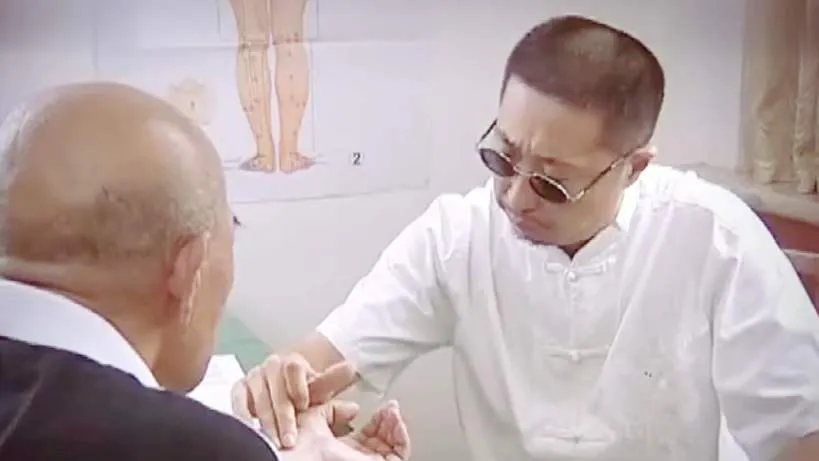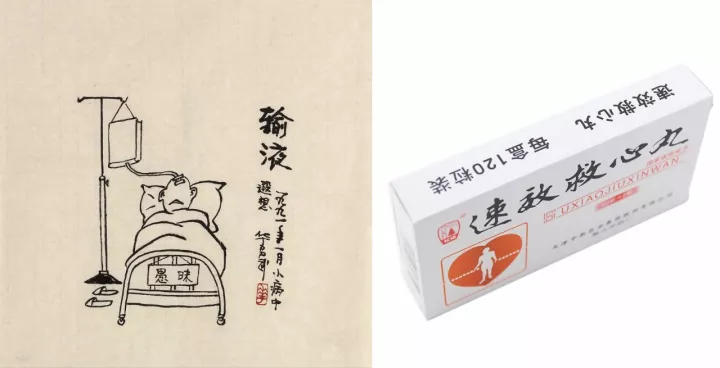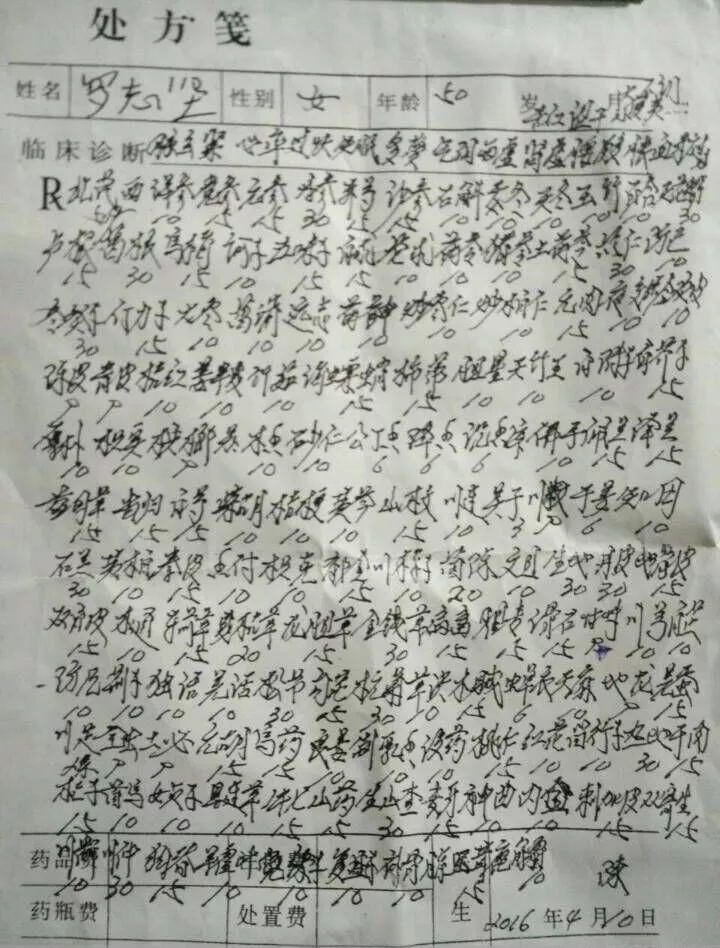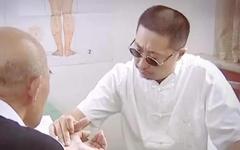Traditional Chinese Medicine (TCM) has a glorious history of over five thousand years within the Chinese nation, symbolizing health, wisdom, and sanctity in the hearts of the people. However, since the Jin and Yuan dynasties, TCM has seriously deviated from the principles of Yin and Yang, leading to various factions that either focus on Yang, nourish Yin, clear heat, or tonify blood and Qi, leaving practitioners confused. Today, the field of TCM has presented three major flaws:

First Major Flaw in TCM
Practicing superficial pulse diagnosis while relying on Western medical reports!
As a TCM practitioner, the tools for diagnosing diseases are merely three fingers, and the diagnostic criteria are based on the Four Examinations and Twelve Patterns. The Four Examinations are “Observation, Listening, Inquiry, and Palpation”; the Twelve Patterns are: “Yin, Yang, Exterior, Interior, Deficiency, Excess, Cold, Heat, Wind, Dampness, Dryness, Fire”.
Today, many so-called “TCM practitioners” claim to use three fingers for pulse diagnosis, but in reality, they are merely pretending and are often distracted, ultimately unable to proceed without laboratory test results.
They prescribe formulas targeting the symptoms: pain is treated with analgesics, Qi stagnation with Qi tonics, and blood stasis with blood-activating herbs, essentially treating headaches with headache remedies and foot pain with foot remedies.
When encountering cancer patients, they often resort to toxic and bitter herbs such as scorpions, centipedes, toads, blister beetles, leeches, geckos, and various others, claiming to use poison to combat poison, without considering the balance of Yin and Yang; neglecting the interactions of the Five Elements; and failing to recognize the changes between internal injuries and external pathogens. Cancer is merely a manifestation of the imbalance of Yin and Yang! Most TCM practitioners neither understand the essence nor the reasons behind it.
Some even more pitiful practitioners do not engage in the Four Examinations or differentiate the Twelve Patterns.
Regardless of the disease, they prescribe heat-clearing medications; some harmful practitioners do not understand the principle of treating according to the pattern, leading to excessive use of cold and cooling herbs, ultimately harming patients. This aligns with what Western medicine refers to as drug-induced diseases and iatrogenic diseases. Today, ninety percent of patients are harmed by incompetent practitioners! Some TCM practitioners lack knowledge and skills, attacking Western medicine to showcase themselves, yet they have never successfully treated cancer, claiming it is easily treatable!
True TCM practitioners understand the six excesses of the heavens, the seven emotions of humans, the six variations of pulses, and can accurately diagnose by examining the three regions and nine indicators, with a clear mind and focused attention, understanding the symptoms of “Yin, Yang, Exterior, Interior, Deficiency, Excess, Cold, Heat, Wind, Dampness, Dryness, Fire” thoroughly. This is the true pinnacle of medical practice.

Second Major Flaw in TCM
Practitioners who are ill themselves, relying on intravenous therapy, antihypertensives, lipid-lowering agents, and quick-acting heart rescue pills.
An excellent TCM practitioner must be healthy themselves, free from internal injuries. If they encounter external pathogens, as long as their righteous Qi is intact, they will not be harmed. If external pathogens cause illness, two doses of herbal medicine can dispel the evil and cure the disease.
The essence, Qi, and spirit of TCM represent the overall image of TCM; a sick practitioner treating others damages the image of TCM and jeopardizes its future!
A practitioner who is ill is fundamentally an unqualified practitioner. If a TCM practitioner does not die from an unexpected accident, it is a great disgrace to TCM!
Even more pitiful are those practitioners who, while being role models, run to Western hospitals for IV drips when they are sick. Some practitioners suffer from cardiovascular diseases and diabetes, relying daily on antihypertensives, lipid-lowering agents, and quick-acting heart rescue pills, yet they boast of being the authentic inheritors of certain schools, recruiting disciples to teach TCM skills, truly harming others and themselves, making a laughingstock of themselves!
Some individuals, having read a few books and packaged themselves, claim to be leaders in TCM, yet they do not know how to prevent or treat heart attacks or strokes, ultimately ending up in Western hospitals for a month of emergency treatment to save their lives. These are the pitiful figures in the TCM community.
In TCM diagnosis, regardless of the disease, it is fundamentally about the invasion of evil on the Yin and Yang Qi and blood, with the disease location being either exterior, interior, or a combination of both, and the condition being either deficiency, excess, cold, heat, wind, dampness, dryness, or fire. Internal injuries stem from the seven emotions, overexertion, dietary habits, or excessive sexual activity; external pathogens are merely the six evils. Understanding these concepts makes diagnosing diseases straightforward! However, those who claim to be famous doctors or great doctors are utterly confused about internal injuries, external pathogens, whether the disease is due to innate Qi or transformed Qi, and the principles of Yin, Yang, Exterior, Interior, Deficiency, and Excess, ultimately harming patients and ruining the practice of medicine.

Third Major Flaw in TCM
Prescribing dozens of herbal medicines in one prescription, often large prescriptions with high dosages.
The Sage of Medicine, Zhang Zhongjing, established the rules for TCM, stating that the human body consists of merely twelve meridians. Even if all twelve meridians are diseased, a prescription would consist of at most twelve herbal medicines, as it is impossible for all twelve meridians to be diseased; otherwise, one would be close to death. In Zhang Zhongjing’s “Treatise on Febrile Diseases”, the prescriptions total about one hundred and thirteen, with three hundred and ninety-seven methods, primarily consisting of one to two herbal medicines per prescription, with three to five herbal medicines being the most common. Eight herbal medicines would be considered a large prescription, and such prescriptions have been effective for over two thousand years.
[Prescription] Dioscorea (Shan Yao), Angelica (Dang Gui), Cinnamon Twig (Gui Zhi), Massa Fermentata (Shen Qu), Rehmannia (Di Huang), Soybean (Dou Huang Juan), Licorice (Gan Cao), Ginseng (Ren Shen), Chuanxiong (Chuan Xiong), Peony (Shao Yao), Atractylodes (Bai Zhu), Ophiopogon (Mai Men Dong), Apricot Kernel (Xing Ren), Bupleurum (Chai Hu), Platycodon (Jie Geng), Poria (Fu Ling), Donkey-hide Gelatin (E Jiao), Dried Ginger (Gan Jiang), White Peony (Bai Lian), Siler (Fang Feng), Jujube (Da Zao) – a total of 21 herbal medicines. This prescription primarily treats critical illnesses where Qi, blood, Yin, and Yang are all imbalanced; beyond this, there are no larger prescriptions.
If there is no critical illness with complete imbalance of Yin, Yang, Qi, and blood, is such a large prescription necessary? Today, many TCM practitioners prescribe at least fifteen herbal medicines, and often more than thirty.
In my view, any practitioner who prescribes more than fifteen herbal medicines is essentially uncertain in their diagnosis and lacks clarity, leading them to accumulate herbs in their prescriptions. After preparing a prescription, they still feel uneasy and add another herb, and then another, resulting in an oversized prescription. It is akin to someone leaving home, believing they have locked the door, but returning to check it multiple times.
For authentic traditional TCM practitioners who study the classics such as the “Huangdi Neijing” and “Shanghan Lun”, it is difficult to exceed ten herbal medicines in a prescription. Even if all twelve meridians are affected, a prescription would consist of at most twelve herbal medicines.
If a practitioner with over five years of experience prescribes more than seventeen or eighteen herbal medicines, in my opinion, they have deviated from the principles of Yin and Yang. Authentic traditional TCM strictly adheres to the principles of Yin and Yang in their prescriptions, reflecting the rules of monarch, minister, assistant, and envoy, as well as the interactions of the Five Elements. Prescribing excessively large formulas, aside from those with ulterior motives to profit and harm, are essentially unqualified practitioners who have not entered the proper path of medicine!
Now, consider this practitioner who prescribes nearly a hundred herbal medicines in one prescription. While others hit the target with a single shot, they scatter their shots everywhere. This practitioner, if not mentally ill, should consider self-harm! If Chinese TCM has reached this point, the traditional medicine of China is not far from extinction!

For decades, many TCM practitioners have gained fame by criticizing Western medicine. However, today, TCM must also reflect on itself; only through reflection can there be progress! The aforementioned flawed practitioners, if they serve as role models, will cause endless harm! Patients seeking treatment should also discern wisely!
From the perspective of traditional TCM, there is a crisis in the inheritance of talent. However, in terms of treatment and modern research, TCM also has its shortcomings. Therefore, integrating modern medicine and research technology is an inevitable trend of development. For patients, the key is to cure the disease and, more accurately, to regulate the body. If we adhere too rigidly to tradition, it is unwise, but the phenomenon of losing TCM thinking is worth our contemplation and vigilance. Source: Internet

